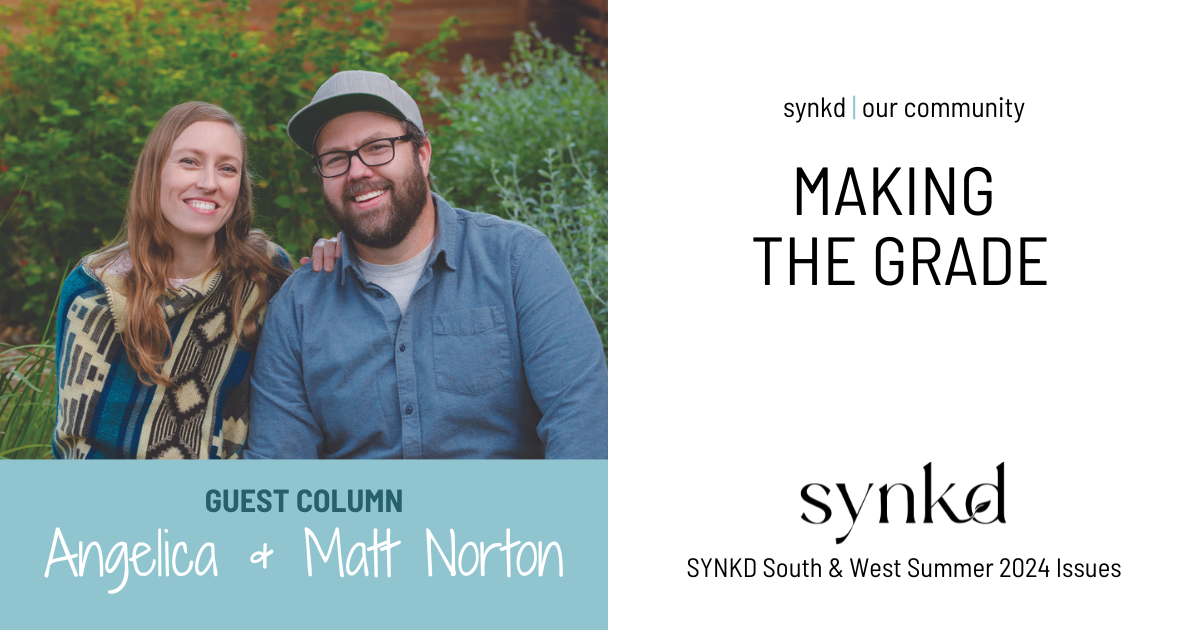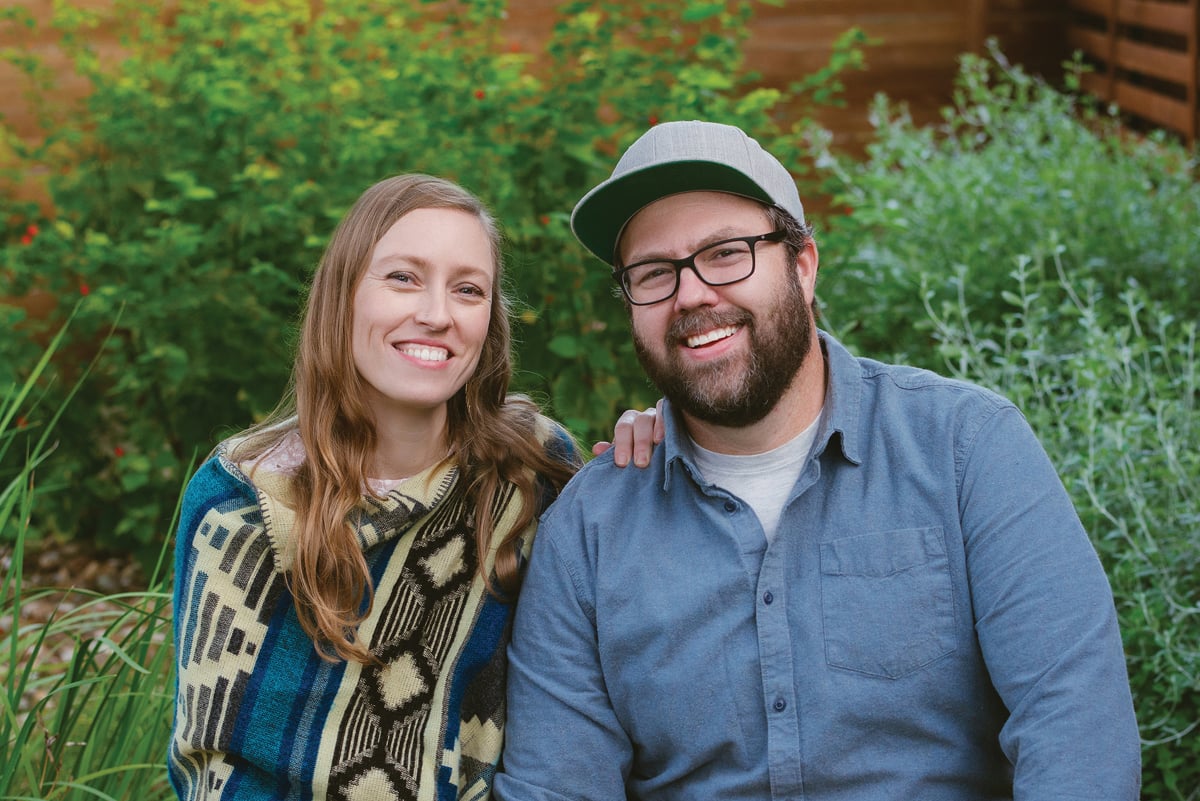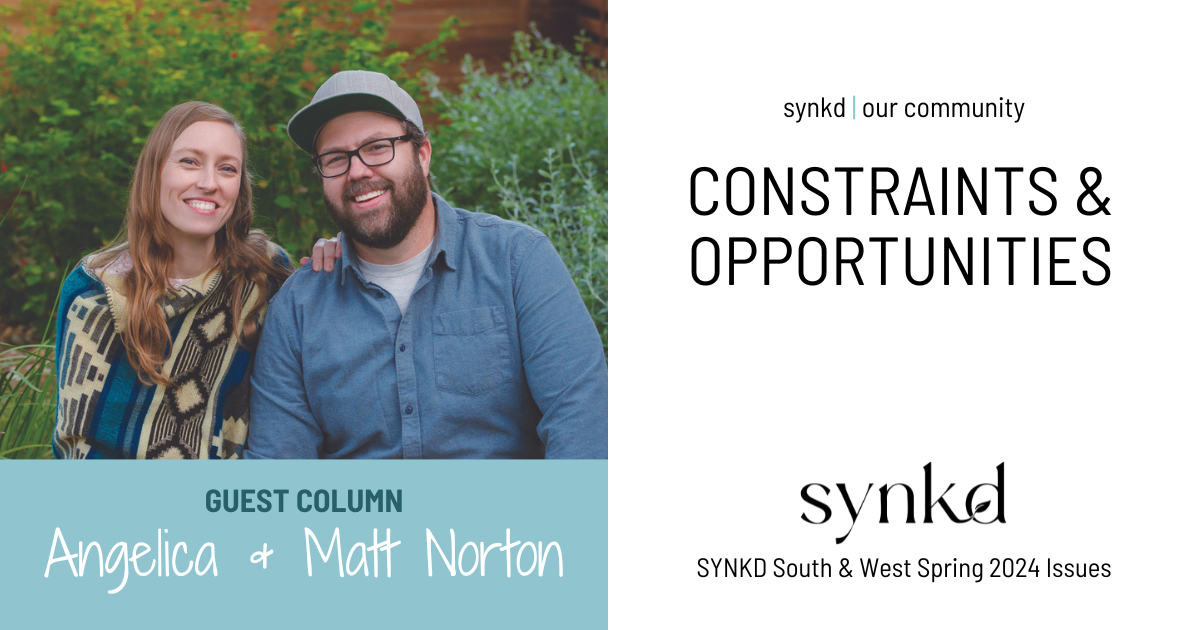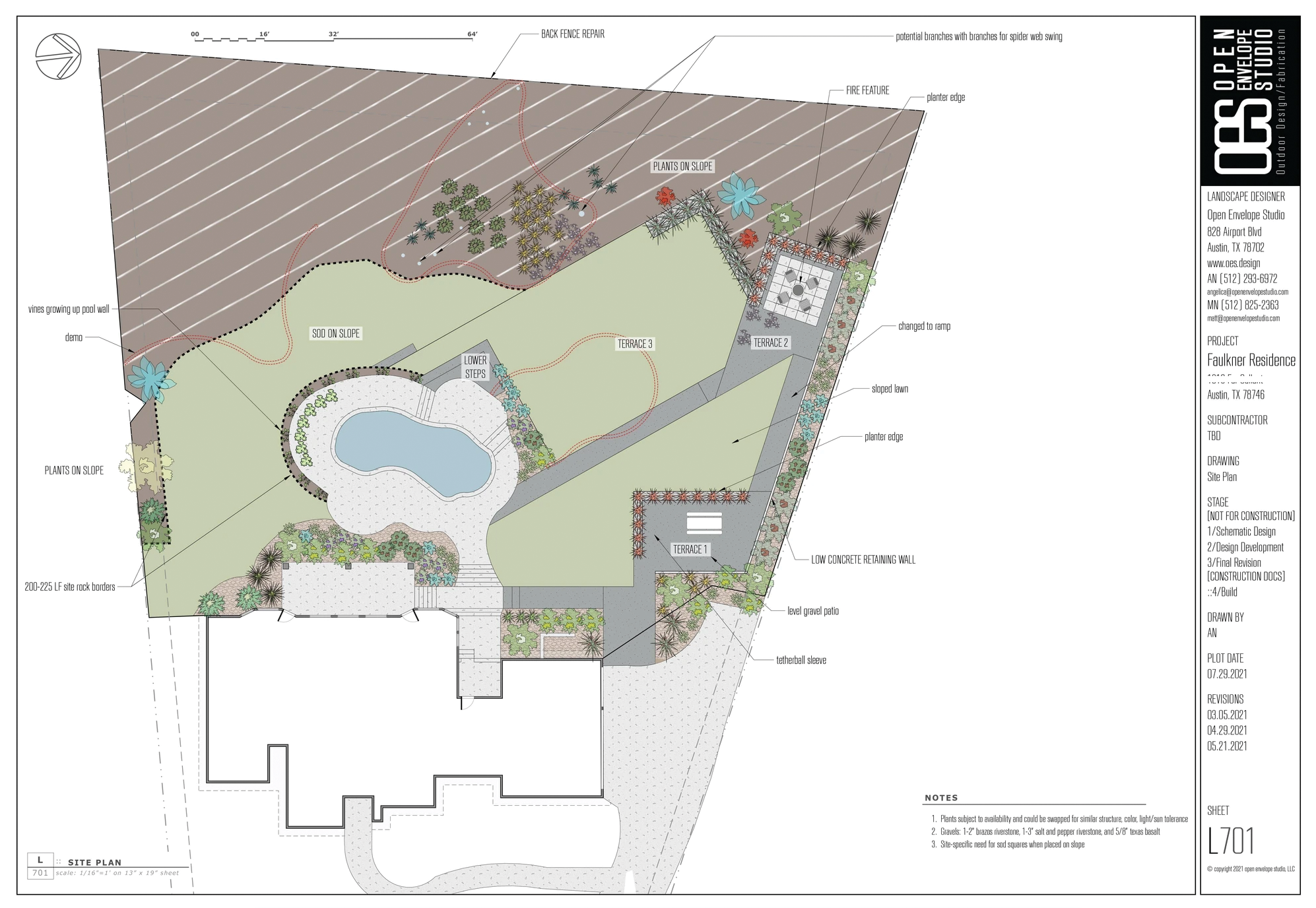Angelica & Matt Norton, landscape designers & owners of Open Envelope Studio, discuss applications, installation, and aesthetic opportunities of steel for designers.
Design development is the phase where early concepts evolve from rough massings into buildable solutions. This stage not only responds to client feedback, but also establishes the technical basis for construction. As a design/build firm, we think it’s important to know what it’s like to work with materials in the field, and steel is one of the most frequently specified elements in our work.
Steel’s industrial character lends itself to urban contexts, reinforcing a masculine, utilitarian aesthetic, but it can also intentionally contrast with the more feminine, natural landscape.
Architecturally, steel is used as supporting structural beams in pergolas, porches, and overhead frames. In the landscape, its applications expand to retaining walls, planters, and clean divisions between materials as edging, making maintenance easier.
It’s often left unfinished to develop a rusted patina, particularly in arid or desert climates where wet/dry cycles allow weathering steel to stabilize. In contrast, coastal or consistently damp environments accelerate corrosion, making steel less resilient over time.
The term Corten is often (and incorrectly) used as a generic descriptor for all outdoor steel. Like Kleenex or Xerox, Corten is a trademarked brand name for a specific formulation of a type of steel, and the name is a portmanteau of corrosion resistance and tensile strength.
In Austin, rusted carbon steel is typically the material of choice for residential projects, while true Corten steel is more common in commercial or legacy projects where budgets allow and longevity is the priority. Untreated carbon steel will last approximately 10-20 years, while Corten can last several decades longer.
Aesthetically, steel feels sleek and restrained. When executed well—plumb, level, and true—it reads as a sharp edge against the softness and irregularity of planting masses. Its smooth surface emphasizes the tactile qualities of wood grain and other natural finishes, and its strength allows for longer spans and smaller structural members, creating lighter forms with stronger joints. It is also relatively low maintenance.
That said, it is more expensive than many alternatives, both in material cost and in the specialized labor required to cut, weld, and assemble it. Its weight and heat retention add challenges when working with it. And if not braced or framed, flaws are easy to spot along the length of a retaining wall.
Steel is strong, durable, and looks clean, but it takes thoughtful design and skilled installation. When done well, steel creates a lasting, functional, and visually striking element in the landscape.
Up Next: Looking ahead, we’ll explore wood as a design element.
Learn More:
Angelica Norton, ASLA
Owner of Open Envelope Studio LLC
Phone: (512) 925-0155
angelica@openenvelopestudio.com
Read the article in the digital issue here.

Making the Grade
Angelica & Matt Norton, Landscape Designers & Owners of Open Envelope Studio, Discuss How Elevation Can Take a Space From Public to Off Limits Our...


 Angelica & Matt Norton
Angelica & Matt Norton
.png?width=493&height=511&name=Angelica%20%26%20Matt%20Norton%20Crafting%20Experimental%20Landscapes%20(Instagram%201).png)

